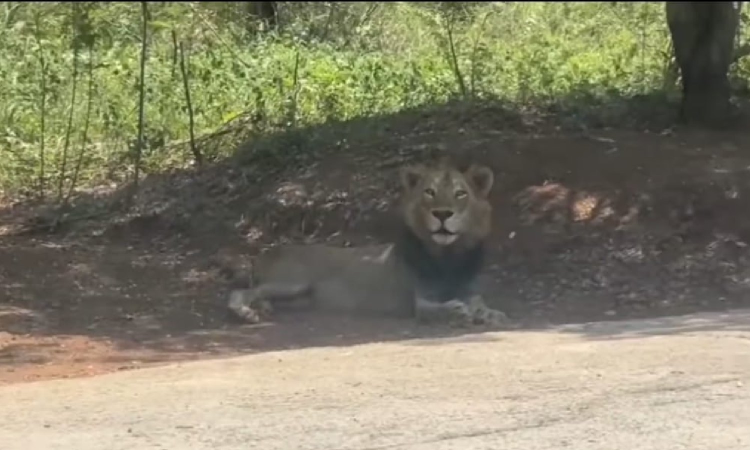Lion goes ‘missing’ at Vandalur Zoo; drones, camera traps join intensive hunt
Zoo authorities have launched an intensive search using drones to scan the vast, forested safari area. As a precaution, the Lion Safari has been temporarily closed to the public until further notice.

File pic of the missing lion
CHENNAI: Officials at the Arignar Anna Zoological Park (AAZP) in Vandalur were sent into a tizzy after a five-year-old male lion named Sheryaar went ‘missing’ from October 3 evening. After the news about the missing lion created a flutter, the zoo authorities said it was sighted within the enclosure and added that thermal imaging drones and camera traps were being used to track it.
Zoo director T Ritto Cyriac confirmed that the lion has been missing but said it was sighted within the forested safari area. "On October 4, the search team sighted the lion inside the safari area. On Sunday, pugmarks have also been recorded near the compound wall within the safari area, and the rake marks on its movement path," the director said.
Activating a multi-layered monitoring strategy, five dedicated teams are on the ground, supported by drone surveillance during the day and thermal imaging drones at night to scan the 50-acre, densely vegetated lion safari zone. Also, 10 camera traps have been installed to track its movements.
"The entire perimeter of the safari zone is secured by both a boundary wall and chain-link mesh fencing, ensuring that the animal remains within the safari area," he said, adding that the lion safari has been temporarily closed to the public as a precaution.
Sheryaar was brought to Vandalur from the Bannerghatta Biological Park, Bengaluru, last year under an animal exchange programme. He had been undergoing training and was being released into the safari regularly to acclimatise him.
On Sunday, the Principal Chief Conservator of Forests and the Chief Wildlife Warden inspected the safari and reviewed the arrangements, the director noted, adding that a team from the Advanced Institute of Wildlife Conservation (AIWC) has also joined the operation.
Responding to criticisms that they responded late, the official said search teams were "immediately" formed after the lion failed to return to its enclosure, and pointed such cases in the past when young lions have returned to their night shelters on their own within two to three days. Officials attribute this behaviour to a young lion naturally exploring its new environment.
"All necessary precautionary and monitoring measures are being undertaken to ensure the animal's well-being and safety," the director added.



